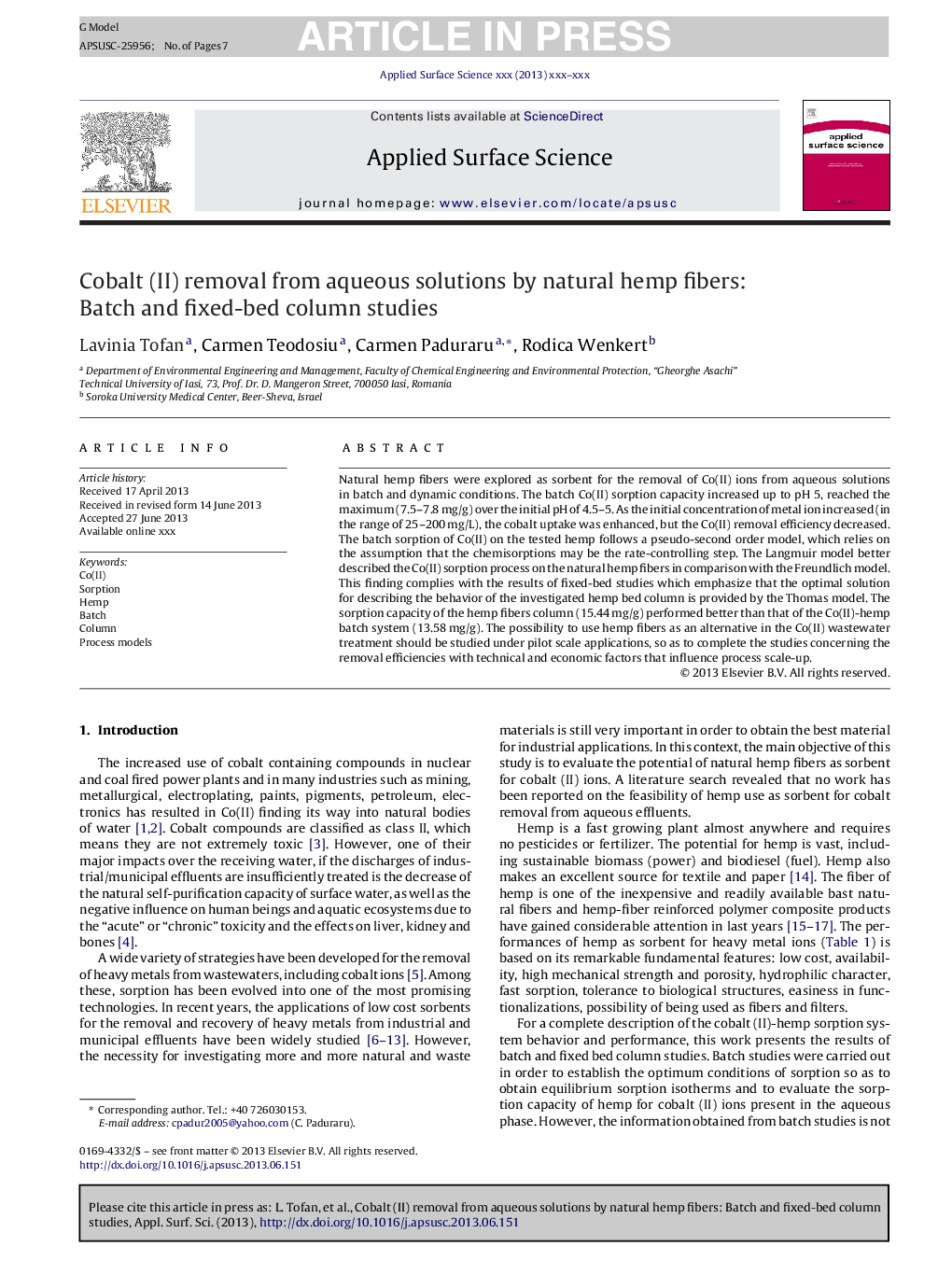| Article ID | Journal | Published Year | Pages | File Type |
|---|---|---|---|---|
| 5362452 | Applied Surface Science | 2013 | 7 Pages |
Abstract
Natural hemp fibers were explored as sorbent for the removal of Co(II) ions from aqueous solutions in batch and dynamic conditions. The batch Co(II) sorption capacity increased up to pH 5, reached the maximum (7.5-7.8Â mg/g) over the initial pH of 4.5-5. As the initial concentration of metal ion increased (in the range of 25-200Â mg/L), the cobalt uptake was enhanced, but the Co(II) removal efficiency decreased. The batch sorption of Co(II) on the tested hemp follows a pseudo-second order model, which relies on the assumption that the chemisorptions may be the rate-controlling step. The Langmuir model better described the Co(II) sorption process on the natural hemp fibers in comparison with the Freundlich model. This finding complies with the results of fixed-bed studies which emphasize that the optimal solution for describing the behavior of the investigated hemp bed column is provided by the Thomas model. The sorption capacity of the hemp fibers column (15.44Â mg/g) performed better than that of the Co(II)-hemp batch system (13.58Â mg/g). The possibility to use hemp fibers as an alternative in the Co(II) wastewater treatment should be studied under pilot scale applications, so as to complete the studies concerning the removal efficiencies with technical and economic factors that influence process scale-up.
Related Topics
Physical Sciences and Engineering
Chemistry
Physical and Theoretical Chemistry
Authors
Lavinia Tofan, Carmen Teodosiu, Carmen Paduraru, Rodica Wenkert,
